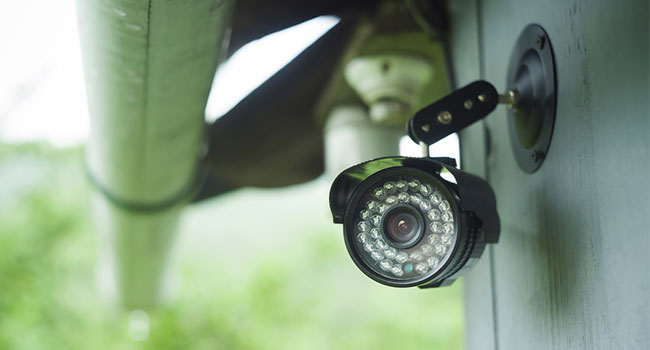
Big Solutions, Small Projects
- By Eugene Kozlovitser
- Jul 22, 2022
A lot of buzz in the security industry revolves around the explosion of the global datasphere. Especially as the COVID-19 pandemic has forced many industries to transition from in-house operations to work-from-home—if not entirely digital—formats, global data creation, consumption and circulation has skyrocketed. This growth is forecasted to continue through 2024 with a five-year compound annual growth rate of 26 percent, according to research from IDC. In other words, COVID-19 only accelerated an ongoing trend.
For data storage infrastructure manufacturers, these forecast patterns remain top of mind, all for reasons you can probably guess—scalability, performance, and ROI. When it comes to enterprise deployments, a data storage infrastructure manufacturer’s goal should be to provide purpose-built storage optimized for security and designed to evolve as technology does.
However, that doesn’t mean optimizing small-scale surveillance projects should take a back seat. There are several reasons integrators and manufacturers alike should prioritize video surveillance solutions for small businesses.
Benefits of Smaller Projects
For one, these deals present a lower risk of falling through. With relatively smaller investments on the table, those smaller projects are more likely to close. When considering the advent of ultra-high-resolution cameras, AI-optimized systems, deep learning, and IoT, signing more projects today guarantees return customers tomorrow.
Especially considering the heightened demand for specialized surveillance systems, designed for remote and event-based offices and properties, purpose-built infrastructure is perhaps more important than ever. As hybrid and remote work models continue to proliferate, physical security will have less to do with entry management and asset protection and more to do with versatility, flexibility, and mobility.
Because physical security remains a critical priority for businesses, as the pandemic has forced so many office models to evolve, keeping a diverse project portfolio will ensure integrators a competitive edge.
For these reasons, manufacturers should design products with every possible security scenario in mind to prepare integrator partners for the same level of preparedness.
What Smaller Projects Entail
A diverse portfolio is important for a few reasons—not only do different sized deployments have unique requirements, so also do different environments. In addition, with variables such as weather, perimeter type, the number of entry points, visitor and employee traffic, and remote accessibility subject to change between solutions, designing adaptable and customizable video surveillance systems for small businesses is a must.
First, these deployments can vary anywhere from one to 16 cameras at a single site, meaning on-site storage must accommodate a specific video data diet. But camera count isn’t the only variable to consider. Camera type (i.e., analog vs. IP) and camera resolution matter as well, on top of preferences regarding search, review, video playback functionality, archival retention time and budgetary parameters. Whether a business is a mom-and-pop shop or part of a global franchise, each of these variables are bound to differ, which means your portfolio must be able to meet each need head-on.
Luckily, for every possible configuration of specifications a purpose-built video storage option and/or video appliance exists.
Why Use NVR?
When it comes down to it, whatever the size of a business, the advantages of installing an IP video recording server are numerous. These computer-based devices (encoders), built with real-time messaging protocol (RTMP) deliver live or on-demand video streams to users whenever and wherever they require it.
In the security world, these devices are meant to capture video from one or more cameras and deliver the video via a computer network for both immediate and post-incident review. Whether paired with AI-enabled software or reviewed in real-time by physical operators, purpose-built video appliances deliver instantaneous footage, which can mean a world of difference for detection purposes.
Additionally, purpose-built servers offer greater customization, meaning clients can choose any VMS. They also offer greater flexibility and scalability, ensuring clients can easily scale storage and compute if there’s ever a need to add additional cameras, upgrade software, or increase retention times.
Don’t Underestimate Scalability
Your business, along with technology, will continue to evolve and you don’t want to invest in data infrastructure that cannot keep up. As data creation, consumption, and circulation continues to skyrocket globally over the next decade, small businesses must invest in a storage architecture that achieves that delicate balance between scalability, performance, and ROI.
Every business needs reliable physical security measures in place. Regardless of camera count, the myriad threats to employees, customers, and assets alike create an unignorable need for video surveillance infrastructure. Addressing that need, however, doesn’t end with installing security cameras. Building a robust security system requires integrating high-performing, purpose-built hardware from the front to the back end.
This includes top-of-the-line security cameras, but more importantly, it means reliable and scalable video storage that can grow with the evolving needs of your business.
Overview of Video Storage Options
BCD’s purpose-built video recording servers set the industry standard for performance, quality and scalability. BCD’s video recording servers include options to support four to 4,000-plus security cameras, maximizing bandwidth for a variety of software applications and market verticals. But most importantly, their entry-level offerings are just as reliable as their enterprise systems.
Every solution BCD offers, from entry-level to enterprise solutions, are optimized using the latest technology and come with BCD’s exclusive software integrations such as Harmonize Bridge for hybrid cloud connectivity and Harmonize iDRAC for remote health monitoring through the VMS or Windows 10/11. Both purpose-built and performance-driven, BCD designs their solutions to be future-ready.
This article originally appeared in the July / August 2022 issue of Security Today.